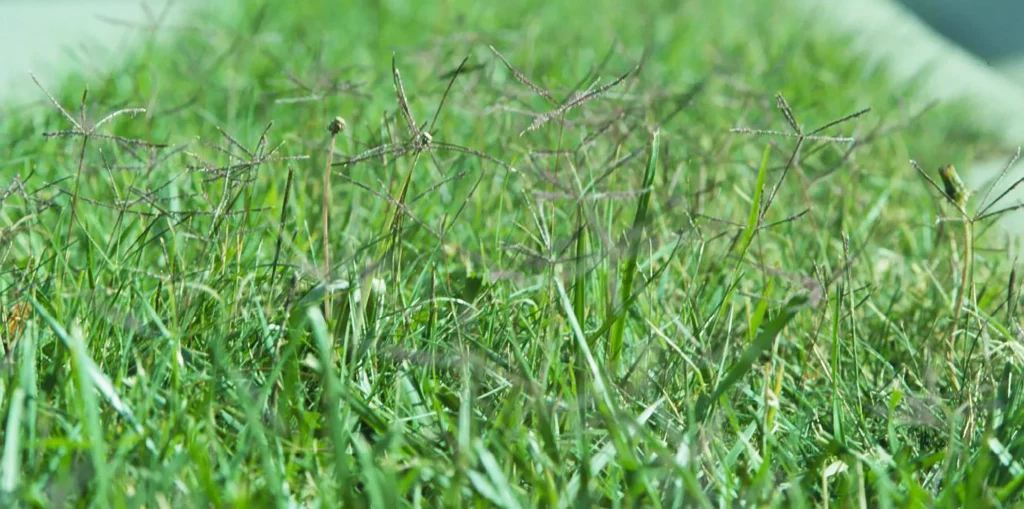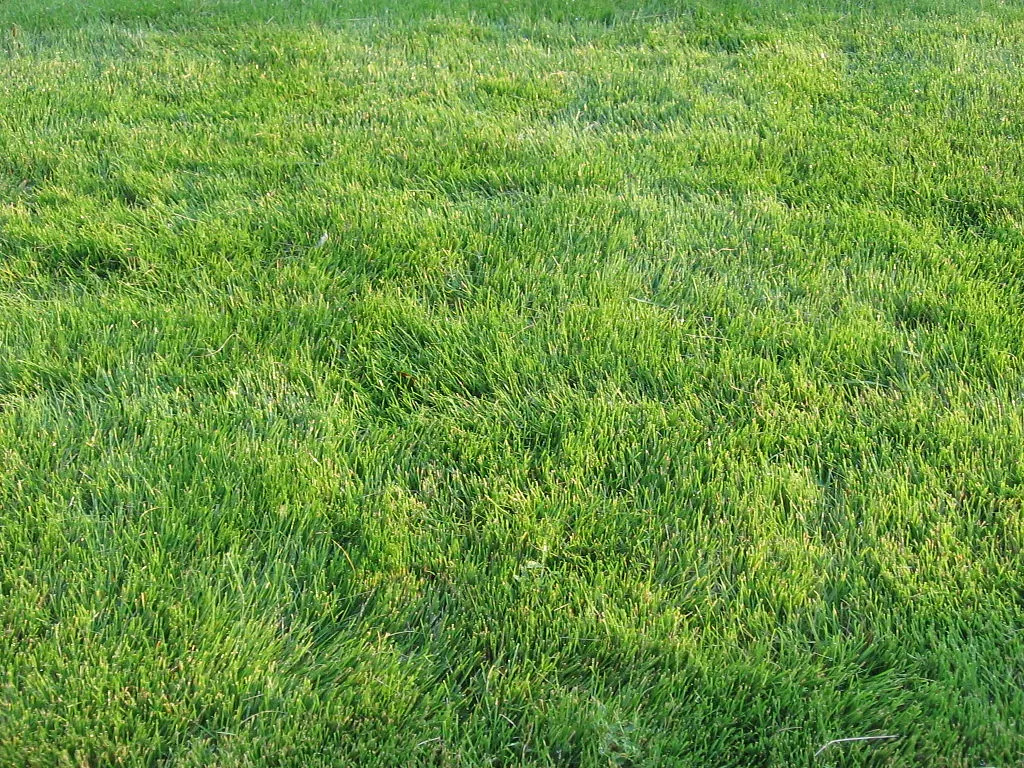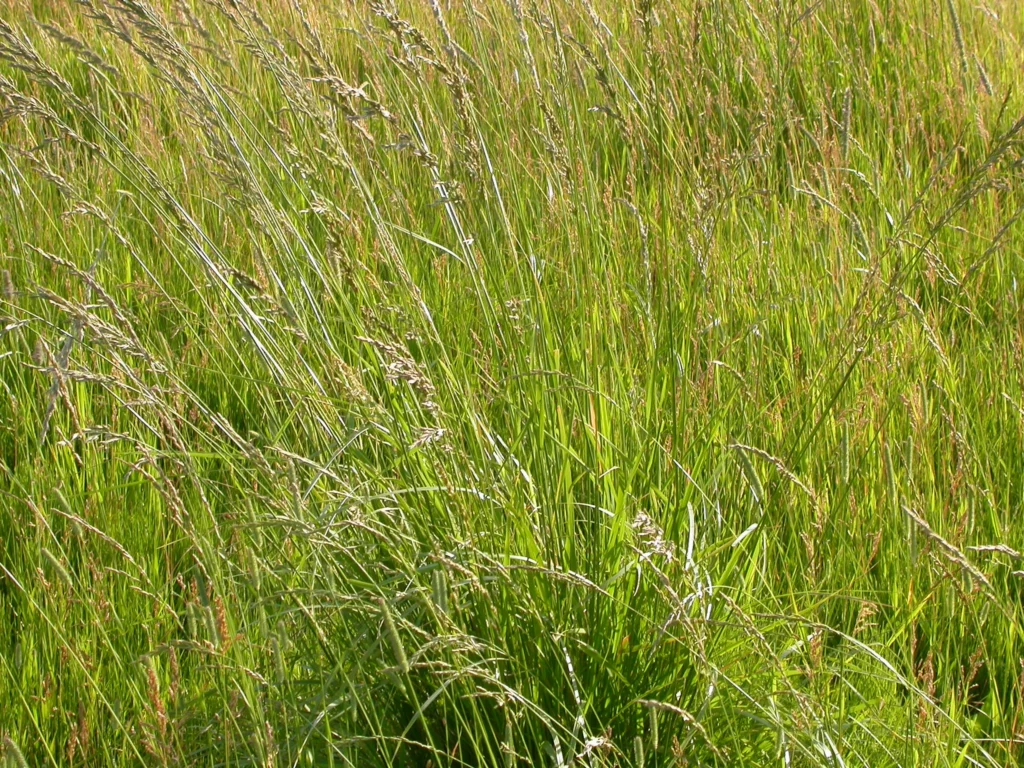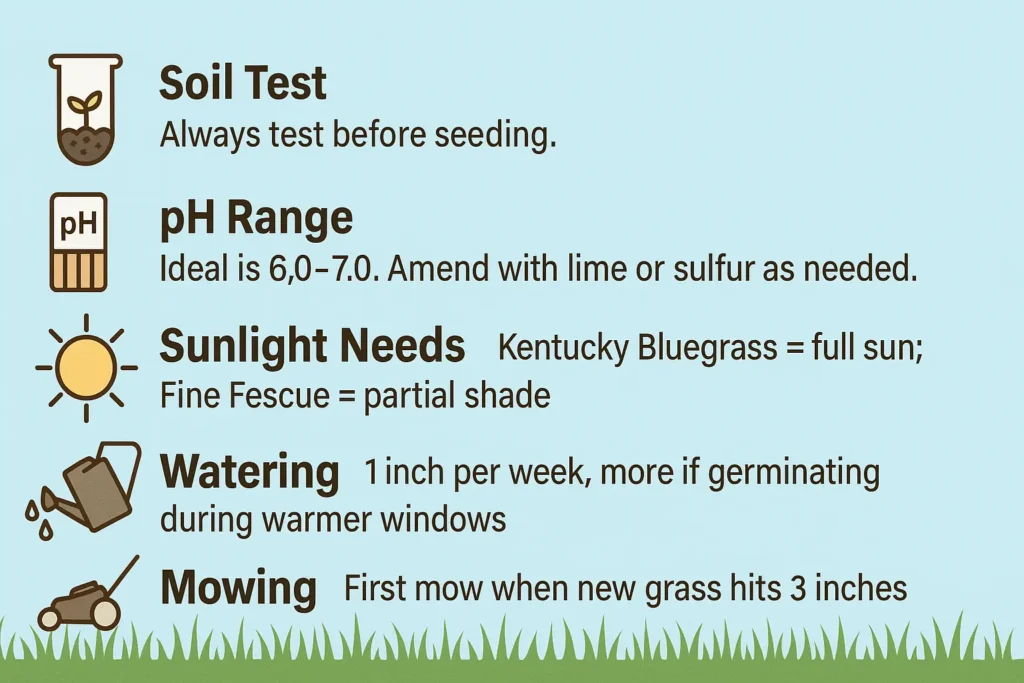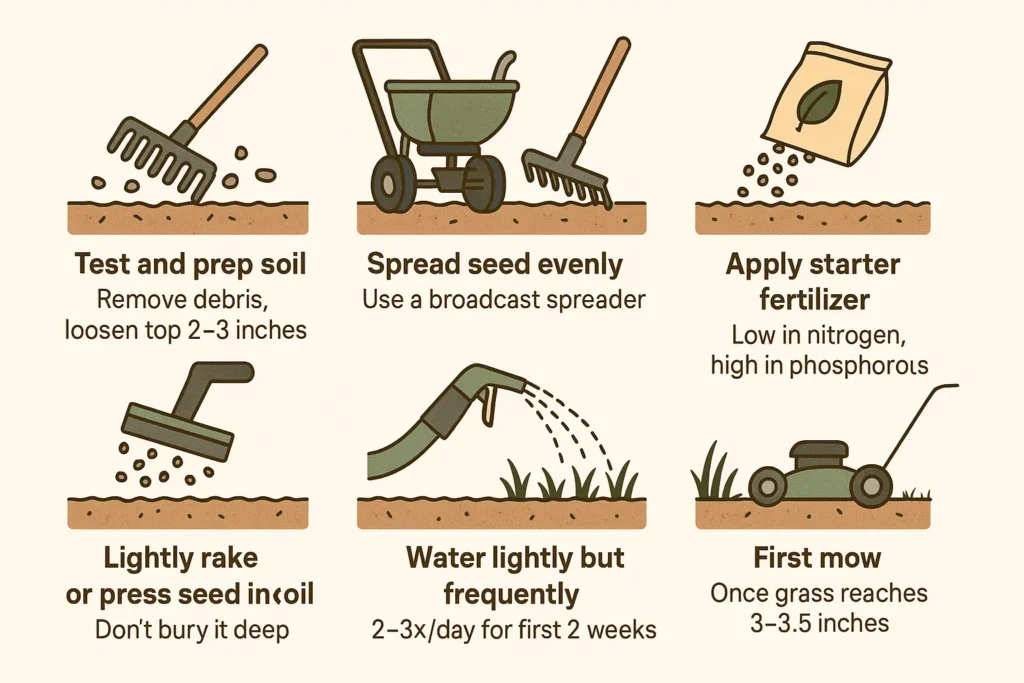When to Plant Grass Seed in Georgia: Regional Timing and Grass Types
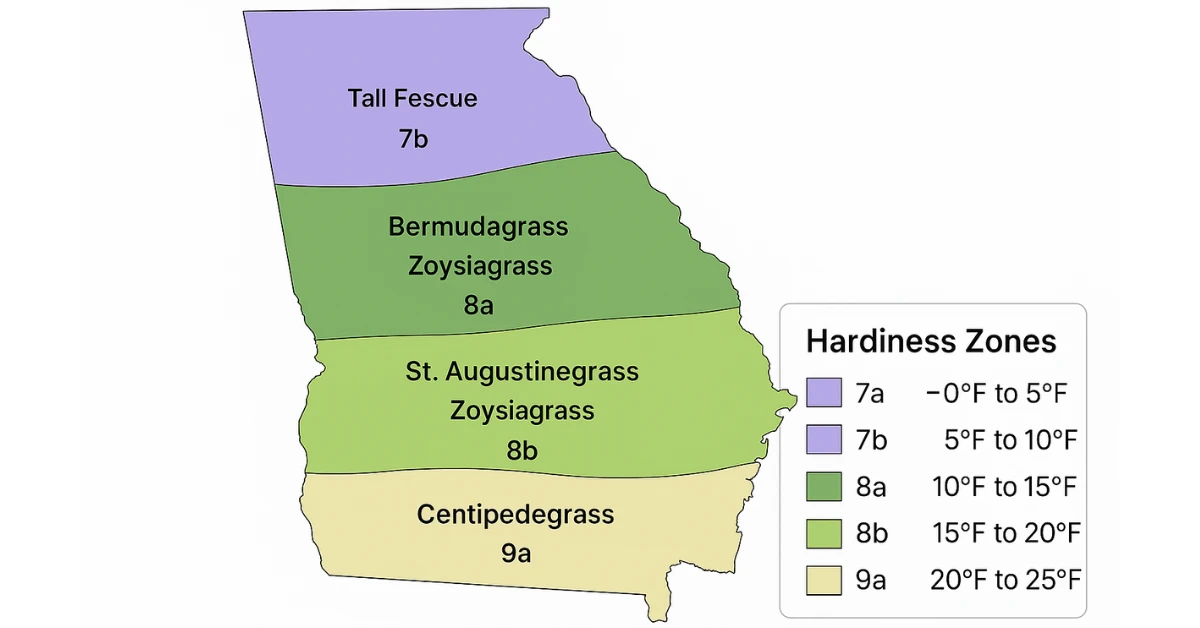
Whether you’re managing a backyard in Atlanta or coastal turf in Savannah, knowing when to plant grass seed in Georgia can make or break your lawn. With two distinct climate zones and a blend of warm- and cool-season grasses, Georgia presents unique opportunities for both fall and spring planting—if you time it right.
This guide covers the best planting windows, grass seed options by region, USDA zones, common pitfalls, and expert tips so you can grow a healthy lawn that lasts.
Best Time to Plant Grass Seed in Georgia
The answer to when to plant grass seed in Georgia depends entirely on the type of grass you’re growing. Georgia straddles zones where warm-season grasses thrive, but in the northern parts, many homeowners also have success with cool-season varieties.
Here’s the breakdown:
- Warm-season grasses (like Bermuda, Zoysia):
Plant in late spring to early summer, when soil temps reach 65°F consistently. - Cool-season grasses (like Tall Fescue):
Plant in early fall (mid-September to early November) for best results in North Georgia.
If you’re reseeding, early fall is generally the most forgiving time across most of the state. But always match your planting time to your grass type and region.
Georgia’s USDA Hardiness Zones and Why They Matter
Georgia spans USDA zones 7a to 9a, which directly influence which grasses thrive and when to plant grass seed in Georgia by region.
Zone: 7a–7b
Region: North GA (mountains, foothills)
Grass: Cool-season & transitional grasses
Zone: 8a–8b
Region: Central GA (Atlanta, Macon)
Grass: Warm-season grasses like Bermuda, Zoysia
Zone: 9a
Region: Coastal GA (Savannah, Brunswick)
Grass: Heat-tolerant warm-season grasses
Hardiness zones affect not just planting times, but also how well grasses survive winter stress or summer heat. If you’re in Zone 9a, for example, planting Tall Fescue may require extra care or fail entirely without shade and irrigation.
🔍 Not sure what zone you’re in? You can look up your zone here.
Best Grass Seed Types for Georgia Lawns
Before answering when to plant grass seed in Georgia, we need to ask what you’re planting. Here’s a breakdown of the top grasses suited to Georgia’s diverse climate:
Bermuda Grass
A warm-season grass, Bermuda loves sun and heat. It spreads aggressively and creates a dense, drought-resistant lawn. Best for southern and central Georgia. Seed in late spring through early summer.
Zoysia Grass
Another warm-season option, Zoysia grows slower than Bermuda but offers a finer texture and handles partial shade. Ideal for Atlanta and surrounding areas. Plant between April and June.
Tall Fescue
This cool-season grass thrives in north Georgia, especially in shaded or sloped lawns. It tolerates drought better than other cool-season types. Best planted in fall, though early spring can work in a pinch.
Centipede Grass
Popular in southeast Georgia, Centipede is low-maintenance and tolerant of acidic soils. It’s slow to grow but reliable. Plant from April through July.
Knowing your grass type is key to determining when to plant grass seed in Georgia and whether it will even thrive.
Georgia Grass Seeding Schedule by Season
Timing matters, especially in Georgia where summers can be brutal and winters unpredictable. Here’s what you need to know season by season:
Spring:
- Ideal for warm-season grasses (Bermuda, Zoysia, Centipede)
- Plant from April to early June
- Soil temperature should be above 65°F
- Watch out for sudden cold snaps in March
Fall:
- Best for cool-season grasses like Tall Fescue
- Seed between mid-September and early November
- Cooler temps + fall rains create perfect germination conditions
- Avoid planting too late—young grass won’t survive winter freezes
Summer:
- Too hot for cool-season grasses
- Warm-season grasses can still be planted through July with irrigation
Winter:
- Not suitable for planting unless doing dormant seeding with Tall Fescue in northern Georgia (advanced)
If you’re deciding when to plant grass seed in Georgia, make sure to match planting time to your grass type and check local soil temps—not just air temps.
Soil and Sun Requirements in Georgia
Soil quality and light levels are just as important as timing. Here’s what to consider:
- Soil pH: Most Georgia lawns do well between 5.8 and 7.0. Centipede prefers slightly more acidic soil (5.0–6.0).
- Soil type: North Georgia = clay-heavy. South Georgia = sandier. Adjust watering accordingly.
- Sunlight: Bermuda = full sun. Zoysia and Tall Fescue tolerate partial shade.
- Water: Georgia summers demand 1 inch of water per week, more during germination.
- Drainage: Avoid compacted soils. Aerate before seeding, especially in clay-heavy zones.
These environmental details must align with your grass type and help dictate when to plant grass seed in Georgia for maximum success.
Seeding by Region in Georgia
Because Georgia covers such a range of zones and elevations, let’s break it down by region:
North Georgia
Sept–Nov (cool-season)
Tall Fescue, Bluegrass blends
Central Georgia
April–June (warm-season)
Bermuda, Zoysia
Southern Georgia
April–July (warm-season)
Bermuda, Centipede
Coastal Areas
Late spring
Centipede, St. Augustine
Matching both seed type and planting window to your region is critical. That’s the nuance behind when to plant grass seed in Georgia—it’s not one-size-fits-all.
Common Mistakes to Avoid
Even if you seed at the right time, avoid these common missteps:
- Seeding too early in spring: Soil is still too cold
- Overseeding warm-season lawns with cool-season grass: Mismatched life cycles
- Skipping a soil test: Leads to pH or nutrient issues
- Watering too little during germination: Dries out new seedlings
- Ignoring shade tolerance: Wrong seed in the wrong spot = patchy lawn
Avoiding these issues is just as important as knowing when to plant grass seed in Georgia—perfect timing means little without proper follow-through.
How to Plant Grass Seed in Georgia?
Follow these steps for best results:
- Test and prep soil: Amend pH and till 2–3 inches deep
- Choose the right seed: Match to your region, soil, and sun exposure
- Spread evenly: Use a broadcast spreader
- Lightly rake in: Cover seed with 1/8″ of soil or mulch
- Water: Light, frequent watering until germination
- Fertilize: Use a starter fertilizer low in nitrogen
- First mow: Wait until grass is 3 inches tall
This basic method works across most seed types in Georgia. The key is pairing it with the right when to plant grass seed in Georgia window.
Additional Tools and Resources
To make planting even easier, we’ve created tools tailored to your needs:
- ✅ Grass Seed Calculator
- ✅ Lawn Fertilizer Calculator – Apply the right amount of nutrients based on lawn size and grass type
- ✅ Lawn Mowing Cost Calculator – Estimate mowing expenses by lawn size, frequency, and contractor pricing
- ✅ Lawn Care Cost Calculator – Budget for overseeding, watering, fertilizing, and more
Visit our Best Time to Plant Grass Seed Guide to access these free resources and get personalized timing based on your exact ZIP code and climate.
Expert-Backed Research and External Guidance
For a research-based look at seeding practices, see this review by Conservation Evidence, which compiles field-tested strategies for sowing grass seed effectively. It’s especially helpful if you’re exploring ecological or low-input lawn options in Georgia’s more extreme climates.
Combining local best practices with global insights ensures you’re using techniques that actually work.
Final Thoughts: When to Plant Grass Seed in Georgia
So, when to plant grass seed in Georgia? The short answer:
- April to June for warm-season grasses like Bermuda and Centipede
- Mid-September to November for cool-season grasses like Tall Fescue
- Check your hardiness zone and soil temp
- Match grass to region, sunlight, and rainfall
By selecting the right seed, planting in the right window, and following proven soil and watering techniques, you’ll be well on your way to a lawn that survives Georgia summers and thrives all year.
If you’re ready to get started, explore our full Guide on Grass Seed Timing and grab your planning tools today.

